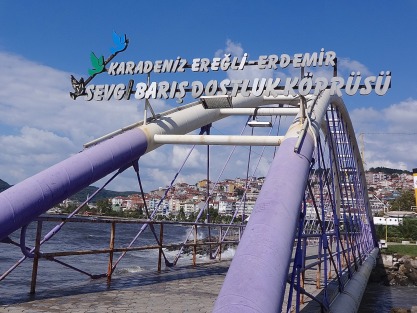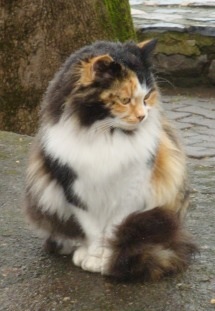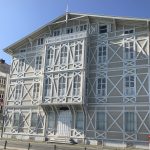Black Sea steel town Population: 122,250
Old name: Heracleia Pontica
On the western Black Sea coast midway between Akçakoca and Zonguldak, Karadeniz Ereğli is a big steel-making town and coal-exporting port with a minor sideline in tourism. The hotels’ bread and butter are business travellers which means that prices are higher than you might anticipate.
Despite the enormous steam-belching steelworks, Karadeniz Ereğli has managed to retain more of its natural attractiveness than nearby Zonguldak, especially since the local authorities have done a lot of excellent work to landscape and generally improve the seaside promenade.
Around town
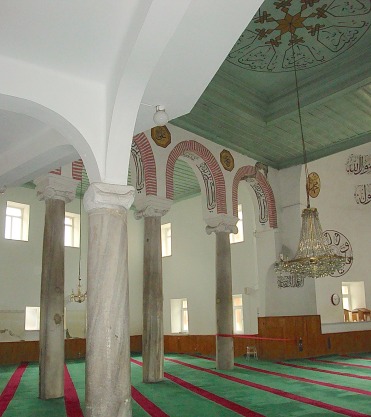 Photos in the museum show that the old city walls still survived into the 1950s. Most of the promenade area was built on reclaimed land and if you walk along the inland side of it you will be able to pick out the odd stretch of the old wall, including the area around the old At Kapı (Horse Gate).
Photos in the museum show that the old city walls still survived into the 1950s. Most of the promenade area was built on reclaimed land and if you walk along the inland side of it you will be able to pick out the odd stretch of the old wall, including the area around the old At Kapı (Horse Gate).
If you strike up the hill in the centre of town above the Halkbank you will pass the slight remains of the old Byzantine city wall that once stood here. It’s sometimes hard to tell which parts are original and which the remains of much newer buildings created using stones from the old castle and city walls.
The Kaneri Kapı (Kaneri Gate) is carefully labelled although there’s precious little left of it, and you’ll be able to make out a couple of arches surviving from the old aqueduct.
The most interesting early Byzantine relic is the Orhangazi Cami which started life as a church as evidenced by the apse with its small, high windows and by pieces of marble (sadly overpainted) inserted into the outer wall. Inside you’ll find yourself looking at the huge columns and capitals of the original church as well as at two pieces of column reused to create the new mihrab. It’s very impressive, reminiscent of the presumed Church of St Andrew that is now the Kocamustafapaşa Cami in İstanbul.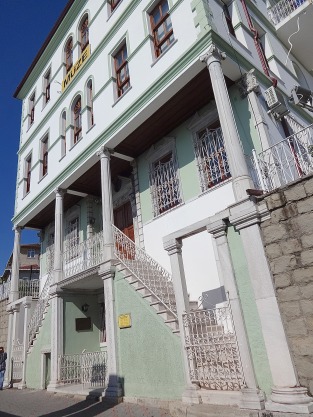
The town’s museum (closed Mondays) is housed in the magnificent 19th-century Halil Paşa Konağı at the eastern end of what is now the Yalı Caddesi string of cafes and bars. It was built on the site of a church and pieces of Byzantine masonry are inset in the facade.
The top floors of the museum show off a fairly mundane collection of ethnographic items, some in glasscases, some in dioramas. The archaeological items on show are also rather run-of-the-mill. However, the back garden has some fine pieces of Roman and Byzantine marble, including a set of capitals with figures carved into them that must surely have come from the same temple despite the lack of certainty. Here, too, is an intriguing strip of architrave that was recarved as a sarcophagus before ending its life as a cattle trough.
At the western end of town you can also visit a replica of the Alemdar, a ship that took part in efforts to supply the Republican troops during the Turkish War of Independence (1919-22). It contains a lot of information on naval history, some of it simplified for (Turkish) children, as well as reproductions of some important paintings including Feyhaman Duran’s portrait of Grand Admiral Cezayirli (Algerian) Gazi Hasan Paşa (1713-90) and his pet lion.
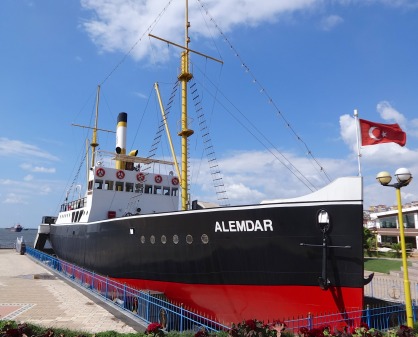 The waterside park and promenade features statues of the town’s greats in history and myth. One shows a very muscular Hercules grappling the triple-headed, snake-tailed Cerberus whom he has dragged from the Gates of Hell a little way east of town (Cehennem Mağarası).
The waterside park and promenade features statues of the town’s greats in history and myth. One shows a very muscular Hercules grappling the triple-headed, snake-tailed Cerberus whom he has dragged from the Gates of Hell a little way east of town (Cehennem Mağarası).
Another shows Uzun Mehmet (Tall Mehmet) from nearby Kestaneci Köyü, the man who first discovered coal in the area in 1829.
Sleeping
Elif Oteli. Small tourism-oriented hotel right by the sea. Likely to be relatively quiet. Tel: 0372-323 7621
Transport info
There are regular minibuses from Zonguldak and Akçakoca to Ereğli. To reach more distant destinations you will probably need to change buses in Düzce.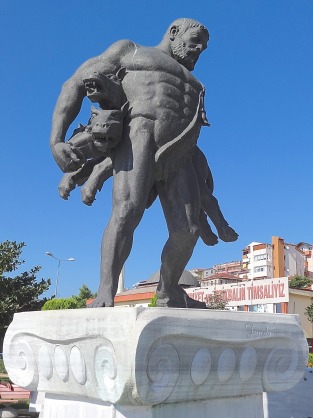
The Otogar is on the outskirts of town on the northern, Zonguldak side.
Day trip destinations
Cehennem Mağarası
